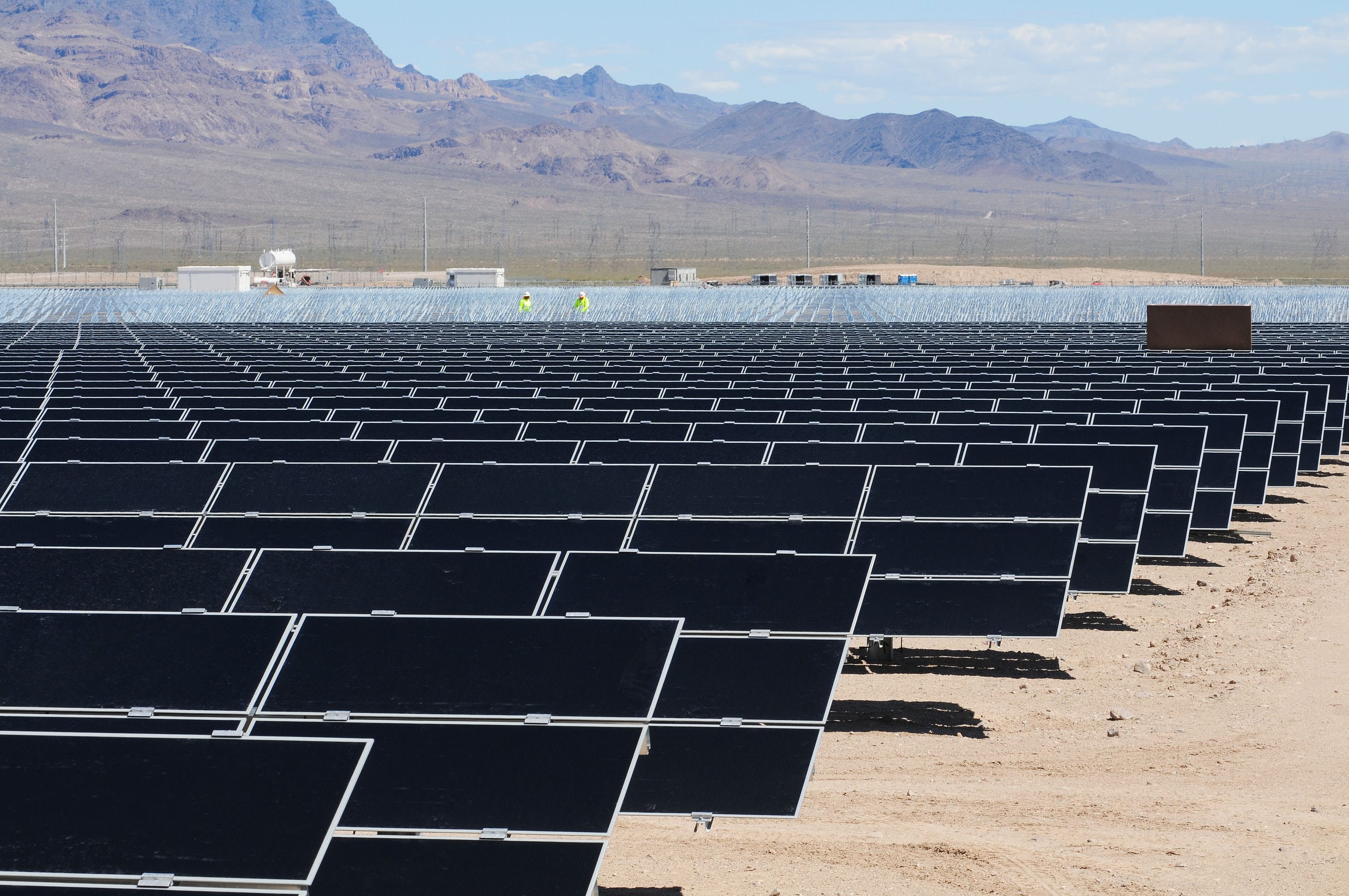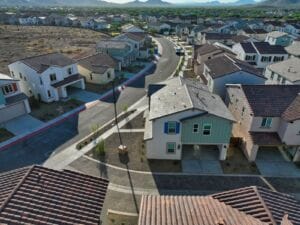For about 300 days each year, the sun shines down on the Valley, making it a refuge for those wanting to pack away their parkas in favor of flip flops. Such conditions are nice for pool parties and tee times, but Phoenix’s glut of sunny days are also conducive for solar power generation. With President Joe Biden’s signature on the Inflation Reduction Act (IRA), federal funds will make it easier for residents and developers to harness one of Arizona’s greatest assets and convert it into clean energy. The question now: How will the new legislation boost Arizona solar development?
The new legislation extends tax credits covering 30% of the costs to install solar panel and battery storage systems, according to a White House fact sheet. Projections estimate that more than 150,000 additional Arizona households will install rooftop panels as a result.
READ ALSO: Here is the Phoenix commercial real estate outlook for 2023
Residential solar customers have been able to access a 30% tax credit since its inception in 2005 under the Bush Administration but it required frequent reauthorization by lawmakers. Known as the Residential Clean Energy Credit in the IRA, households can continue to receive a tax credit to cover 30% of the costs of installing rooftop solar as an investment and battery storage through 2032.
For Joy Seitz, president and CEO of American Solar & Roofing, the IRA’s extension of the residential solar tax incentives means her business can now operate on surer footing.
“There was always a cliff looming where [the tax credit] could go away because it might not get renewed by the current Congress,” Seitz explains. “Or that it would fall two to three percentage points, which we were about to experience. Last year, we went from 30% to 26%, and it was scheduled to decline to 23% next year. In any business, you want to have stable and reliable policy forecasts you can build a company around.”
For the first time companies like American Solar & Roofing can count on solar incentives staying at 30% for a decade, which helps with sales projections since a reduction in the tax credit effectively raises the cost of the product for consumers. This surety, Seitz says, allows her to focus more on other aspects of the business, such as culture, training programs and being active in the community.
“I’m no longer having to walk the halls of Congress trying to convince them we’re a reliable sector that can do great things for not only our state, but for the U.S.,” she says. “The 10-year roadmap [in the IRA] gives everyone a runway to figure out how to move off coal and fossil fuels into something that’s clean, sustainable and creates jobs.”
Solar farms
The IRA dedicates $369 billion to combating climate change through investments in renewable energy, with incentives for both residential and commercial uses. It contains tax credits covering 30% of the costs of community solar projects, with additional bonus credits of 20% for projects at affordable housing properties and 10% for projects in low-income communities.
But long before the federal government made these funds available, Kuldip Verma, founder and CEO of Vermaland, saw Greater Phoenix’s potential for large scale solar generation back in 2007.
“There was a downturn in the land market, and we started exploring what other avenues we could tap into. Solar came to mind, and it was starting to grow,” Verma explains. “We did sell some land to solar developers [at that time], but they weren’t that big of parcels and the technology was still expensive.”
Today, solar cells are considerably cheaper, with the Solar Energy Industries Association (SEIA) reporting that prices have fallen 52% over the last 10 years. This, combined with the tax credits available in the IRA, have made the development of solar farms more economically feasible.
Some developers, Verma says, had the foresight to see the growing demand for solar electricity — especially as electric vehicles become more prevalent — and began purchasing land for solar projects two years ago. The biggest increase in interest, however, was in the first half of 2022 when the IRA was taking shape.
“Initially, [developers] were looking for larger parcels — about 3,000 acres for a 500-megawatt project,” Verma says. “Now, with the new IRA incentives, there will be smaller ones as well, maybe 40 acres for a 10-megawatt farm.”
For now, Verma says his company is focused on the larger parcels and has put negotiations on hold for properties less than 100 acres so more resources can be dedicated to the bigger deals. Vermaland has 14,000 acres in the pipeline and anticipates more within the next 12 months. He believes this boom in solar farms will be a boon for Arizona, but notes that there’s only so much private land left.
“Most of the larger parcels are being picked up by the solar companies in Buckeye, Tonopah and Gila Bend. In three or four years, I anticipate a huge shortage,” he concludes. “This can be best compared to the gold rush, but we are viewing land as gold.”




